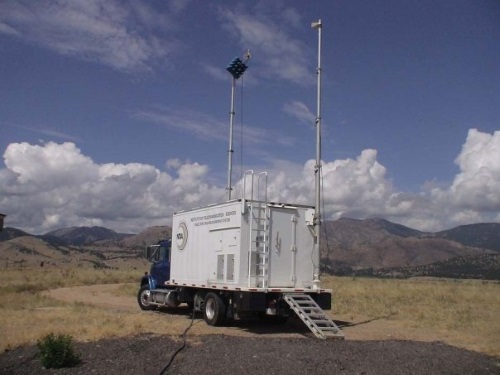The Federal Communications Commission and National Telecommunications and Information Administration kicked off a new effort on February 15 to improve U.S. government coordination on wireless spectrum management.
[Above photo by the NTIA]
The new Spectrum Coordination Initiative will involve actions by both agencies to strengthen the processes for decision-making and information sharing, while working more cooperatively to resolve spectrum policy issues.

“Now more than ever we need a whole-of-government approach to spectrum policy,” said Jessica Rosenworcel the FCC’s chairwoman, in a statement. “Over the past few years we’ve seen the cost of not having one – and we need a non-stop effort to fix that.”
She added that this new initiative seeks to improve the two agencies’ ability to address gaps in governmental coordination in a number of ways:
- Reinstate High Level Meetings: For the first time, the FCC’s chair and NTIA’s assistant secretary will hold formal monthly meetings to conduct joint spectrum planning – exceeding existing statutory requirements.
- Reaffirm Roles and Responsibilities: Building on NTIA’s statutory role as manager of the federal government’s use of spectrum, the FCC and NTIA will update the nearly 20-year-old memorandum of understanding between the agencies to address gaps in government coordination and to better reflect today’s spectrum opportunities and challenges.
- Renew Efforts to Develop a National Spectrum Strategy: To secure America’s leadership, the FCC and NTIA will collaborate to help inform the development of a national spectrum strategy, increase transparency around spectrum use and needs, and establish long-term spectrum planning and coordination.
- Recommit to Scientific Integrity and Evidence-Based Policymaking: The FCC and NTIA will work cooperatively to develop processes for spectrum engineering compatibility analysis. These will include a compilation of principles, guidelines, accepted technical standards, interference protection criteria, propagation models, and other characteristics.
- Revamp Technical Collaboration: The FCC and NTIA will foster proactive technical exchange and engagement with industry and other federal agencies by participating in cross-agency advisory groups. To start, the FCC will participate as an observer in the Commerce Spectrum Management Advisory Committee, and NTIA will participate as an observer in the FCC’s Technological Advisory Council and the Communications Security, Reliability, and Interoperability Council.
Spectrum management is major issue for state departments of transportation – one that has put state DOTs at loggerheads with the FCC over the past several years.

For example, the American Association of State Highway and Transportation Officials and Intelligent Transportation Society of America are currently suing the FCC in D.C. Circuit Court over the need to preserve the entire 5.9 GHz wireless spectrum band for transportation communication needs – largely to help reduce vehicle crashes and improve safety on U.S. roads.
That lawsuit stems from the FCC’s decision in November 2020 to open up the 5.9 GHz band to non-transportation use – a decision opposed by all 50 state DOTs, the District of Columbia, and Puerto Rico represented by AASHTO, who went record against the FCC’s decision in an August 2019 letter to the agency.
 Nation
Nation
Registration Open for AASHTO’s Winter Rail Meeting
December 19, 2025 Nation
Nation

